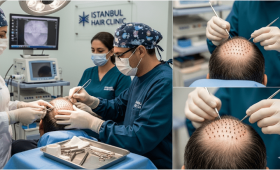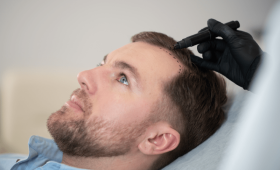Causes and Types of Hair Loss
Hair loss is not solely dependent on genetic factors; it can be caused by many different reasons such as stress, hormonal imbalances, nutritional deficiencies, certain medications, and autoimmune diseases. While male pattern baldness (Androgenetic Alopecia) is the most common type, similar problems can also be observed in women. There are different types, temporary or permanent, such as Alopecia Areata (patchy hair loss) or Telogen Effluvium (seasonal or stress-related intense shedding). Correctly identifying the type of shedding and the underlying cause is the first and most important step in an effective treatment plan. Therefore, consulting a specialist will prevent unnecessary waste of time.
The Importance of Early Diagnosis
Early diagnosis and intervention in hair loss are vital to prevent permanent baldness. When hair loss first begins, the hair follicles are not completely dead; they are merely weakened and miniaturized. At this stage, it is possible to strengthen the roots with non-invasive treatments like topical solutions, supplements, or PRP. Delaying treatment can lead to the complete passivation of stem cells, leaving no option other than hair transplantation. Therefore, acting on the first symptoms increases treatment success.

Topical Solutions for Hair Loss
Topical solutions available on the market generally aim to increase blood circulation in the scalp and deliver essential nutrients to the hair follicles. Shampoos, serums, and lotions fall into this category. Minoxidil-based products, in particular, have a proven effect in slowing down shedding and stimulating new hair growth by widening capillaries and extending the hair growth cycle. However, these products require regular and long-term use; the likelihood of shedding returning is high upon discontinuation.
Minoxidil and Its Usage
Minoxidil is an FDA-approved active ingredient widely used to treat hair loss. It was initially developed as a blood pressure medication, but was observed to stimulate hair growth as a side effect. It is currently available in 2% and 5% solutions. It usually takes 3 to 6 months to show its effect, and for best results, it is recommended to apply it regularly twice a day. It is essential for pregnant or breastfeeding women and individuals with certain heart conditions to consult their doctor before use.
Finasteride and Hormonal Treatments
Finasteride is an oral medication used specifically in the treatment of male pattern baldness (Androgenetic Alopecia). It blocks an enzyme in the body that converts testosterone into Dihydrotestosterone (DHT), which causes hair loss. By lowering DHT levels, the miniaturization of hair follicles is slowed down and halted. Although an effective treatment, it can potentially cause some side effects as it affects the hormonal structure, and its use is strictly mandatory under a doctor’s supervision. Its use in women is generally limited to the post-menopausal period.
What is PRP (Platelet-Rich Plasma) Therapy?
PRP is a procedure where plasma, obtained from the patient’s own blood and rich in growth factors, is processed and injected into areas experiencing shedding or where weak hair follicles are located. These growth factors help to activate dormant hair follicles, thicken existing hair, and improve blood circulation. This non-surgical method is often preferred as a supportive treatment before or after hair transplantation, and the best results are achieved when applied in multiple sessions.
Strengthening Hair Follicles with Mesotherapy
Hair mesotherapy involves injecting a mixture of vitamins, minerals, amino acids, and micronutrients needed by the hair follicles directly into the middle layer of the scalp using very fine needles. This method minimizes systemic side effects and maximizes efficiency by ensuring nutrients reach the target point directly. It is used to improve hair quality, reduce shedding, and stimulate hair growth. When combined with PRP, mesotherapy can create a synergistic effect, significantly improving treatment outcomes.
Laser Therapy (Low-Level Light Therapy)
Low-Level Laser Therapy (LLLT) is a non-invasive treatment that aims to stimulate hair follicles with light energy, accelerating cell metabolism and increasing blood flow. This therapy helps hair follicles stay in the growth phase (anagen) longer. It is generally applied using devices in the form of helmets or combs used at home. LLLT is considered a suitable option for individuals experiencing mild to moderate hair loss or seeking support for other treatments.
The Role of Natural Supplements (Biotin, Zinc, Iron)
There are several natural supplements that are critically important for hair health. Biotin (Vitamin B7) contributes to strengthening hair strands by playing a role in the production of keratin, the main structure of hair. Zinc is a necessary mineral for the growth and repair of hair tissue, and its deficiency can cause shedding. Iron deficiency anemia, which is common, especially in women, is a significant cause of hair loss. The most correct approach is to use these supplements under medical supervision, after deficiencies in the body have been detected.
The Effect of Lifestyle Changes on Treatment
Adopting a healthy lifestyle is a factor that directly affects the success of hair loss treatments. Sufficient and high-quality sleep is essential for the regeneration of hair follicles. Stress management prevents stress hormones from triggering hair loss. A balanced and protein-rich diet ensures the supply of building blocks for hair. Avoiding smoking and excessive alcohol consumption is critical for protecting blood circulation in the scalp and the health of hair follicles. These changes will amplify the effect of medical or surgical treatments.
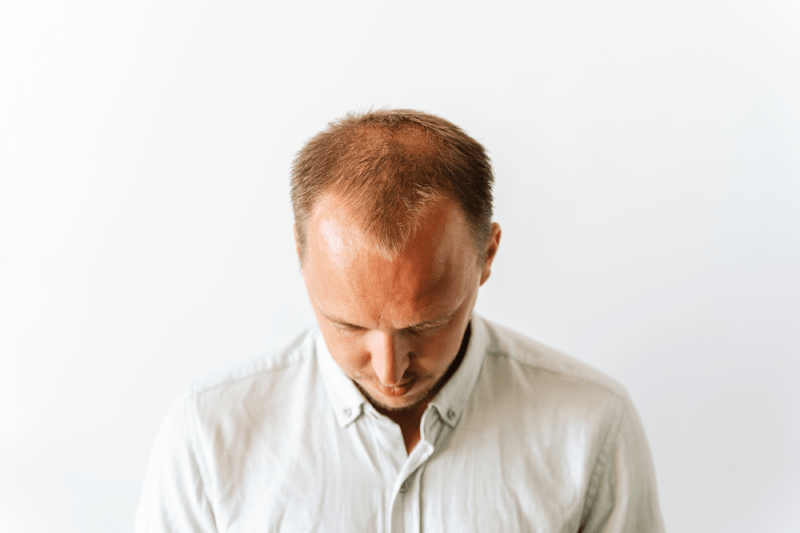
Hair Transplantation: The Key to a Permanent Solution
Hair transplantation is the process of transplanting hair follicles (grafts) from the nape area, which are genetically resistant to shedding, to the area experiencing hair loss. This surgical procedure offers a permanent and natural-looking solution. It stands out as the only real solution in cases where hair loss treatments are ineffective or the level of baldness is advanced. A successful transplantation must be planned according to the person’s natural hairline and the density of the donor area must be preserved.
FUE Technique: The Most Popular Method
Follicular Unit Extraction (FUE) technique is the most common and accepted hair transplantation method today. In this technique, hair follicles are harvested one by one using special, micro-motorized punches or manually. This way, no large incision scar remains in the donor area, only very small dot-like scars, which heal quickly. FUE is a globally preferred technique due to both patient comfort and high recovery speed.
The Difference of DHI (Direct Hair Implantation)
Direct Hair Implantation (DHI) technique is a variation of FUE and is performed using a special tool called the Choi implanter pen. In this technique, the processes of opening channels and placing the roots are done simultaneously immediately after the hair follicles are harvested. This shortens the waiting time of the roots outside the body, reduces the risk of root damage, and allows for denser transplantation. It is an ideal method, especially for non-shaven transplantation or narrow areas where hair will be partially transplanted.
Sapphire FUE and Its Advantages
Sapphire FUE technique is a method where special tips made of sapphire mineral are used instead of the steel-tipped blades used in traditional FUE. Sapphire tips allow for much sharper and smoother channels to be opened. This minimizes tissue damage, speeds up the recovery process, and allows the transplanted hair follicles to be placed at a denser and more natural angle. Sapphire FUE is a high-level technique aimed at maximizing the natural appearance in hair transplantation.
The Concept of Graft and the Importance of its Number
A graft is a piece of tissue containing one or more hair follicles. It is the basic unit that determines success and density in hair transplantation. A graft usually contains between 1 and 4 hair strands. Correctly determining the number of grafts to be transplanted according to the patient’s needs is critical for the outcome of the operation. Placing sufficient grafts correctly ensures satisfactory results in terms of both aesthetics and density.
Preparation Process Before Hair Transplantation
The preparation process before a hair transplantation operation is of great importance for a successful result. Patients are advised to stop smoking and alcohol consumption at least one week before the operation, as these can negatively affect blood circulation. The use of blood thinners and certain vitamin supplements should also be temporarily stopped on a doctor’s advice. Additionally, comfortable clothes should be preferred on the day of the operation, and having breakfast is important.
Points to Consider During the Operation
The hair transplantation operation is usually performed under local anesthesia and can take several hours. Patient comfort and convenience should be a priority during the operation. While the expert team works meticulously to ensure the patient feels no pain, the patient must also comply with the doctor’s instructions. Especially avoiding contact with the areas where roots are harvested and transplanted is a fundamental rule that directly affects the success of the operation.
Recovery Process and the Scabbing Period
The first 10-15 days after hair transplantation are the most critical period of the recovery process. During this time, small scabs form in the transplanted area, and these scabs are slowly shed using special washing methods recommended by the doctor. Scratching or forcing the scabs off is strictly not recommended, as it could damage the transplanted grafts. The first
wash is usually performed by expert personnel at the clinic, which helps the patient learn the correct aftercare.
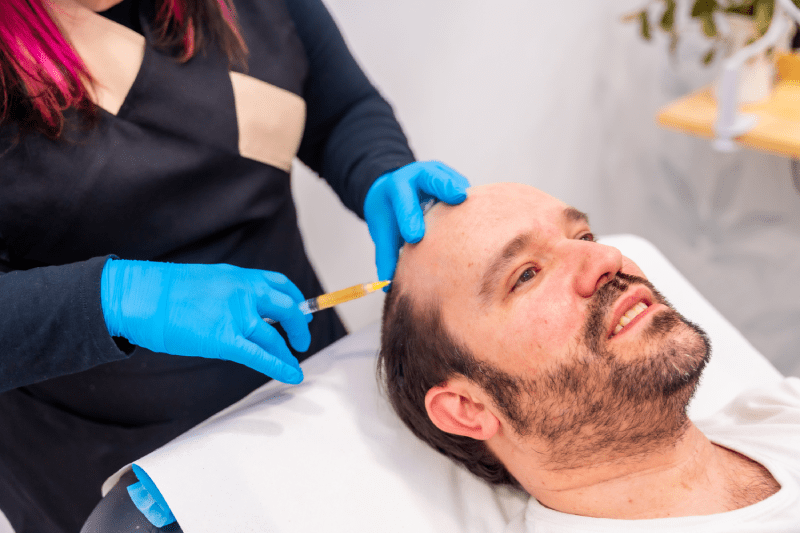
What is Shock Loss and When Does It Start?
Shock loss is the temporary shedding of the transplanted hair, approximately 2 to 8 weeks after the hair transplantation operation. This condition is completely normal and expected. The transplanted hair follicles enter the resting phase in response to trauma and shed the hair strands. The important thing is that the roots are not damaged and that permanent and healthy hair grows in place of the shed strands. Patients should overcome this period without getting discouraged, as the roots are still in place.
Permanent Results and Care After Hair Transplantation
It can take 6 to 12 months for the full results of the hair transplantation to be visible. During this period, the hair gradually grows and strengthens. To maintain the permanent results, special shampoos, lotions, and if necessary, supportive treatments (PRP, vitamin supplements) recommended by the doctor should be applied regularly. Protecting against sunlight, avoiding excessive heat, and maintaining a healthy lifestyle help the transplanted hair retain its quality for life.
Nice, France: Aesthetic and Health Tourism
Nice, the charming Mediterranean city in France, is known as one of Europe’s leading aesthetic and health centres. It attracts attention with its high standard of living, luxury facilities, and advanced medical technology. However, these high standards naturally bring costs. Patients considering treatment in Nice must take into account not only the operation costs but also the general expensiveness of the city.
General Structure of Hair Transplant Clinics in France
Hair transplant clinics in France generally operate with a boutique service understanding. Doctors and surgeons are highly qualified professionals who have undergone long training periods. However, the number of clinics and daily patient capacity is quite limited compared to the large centres in Turkey. Since these clinics cater to the high-price segment, the time allocated per operation may be longer; however, this also increases appointment waiting times.
The High Costs of Receiving Treatment in Nice
The cost of getting a high-quality hair transplant in Nice can be 3 to 5 times higher than a procedure of the same quality in Turkey. This cost difference stems from high labour costs, facility operating expenses, and general living expenses. Prices are usually calculated on a per-graft basis, and the cost of a 4000-graft operation can reach tens of thousands of Euros just for the surgical procedure. This presents a major obstacle for patients with limited budgets.
The Place of Cosmetic Procedures in the French Health System
In France, state health insurance (Sécurité Sociale) generally does not cover procedures such as hair transplantation for aesthetic and cosmetic purposes. Patients must cover the entire cost of such treatments out of their own pockets. This means that those considering treatment in Nice will personally bear all operation, medication, and follow-up expenses, which further increases the total cost.
Accommodation and Travel Expenses in Nice
Since Nice is one of Europe’s most popular tourist destinations, accommodation and travel expenses are quite high. Quality hotel prices in the city centre start from hundreds of Euros per night. Considering the need to rest for a few days after hair transplantation, accommodation costs alone constitute a major budget item. Airfare and urban transportation costs are also at high European standards.

Language Barrier and Communication Difficulties
Although many clinics in Nice accept international patients, the main language is French. Correct understanding of medical terms and complex procedure details is critical for the patient’s health and treatment satisfaction. If the patient speaks a language other than French or English, they are forced to find a reliable interpreter or rely on the clinic’s multi-lingual service capacity. This situation can increase the risk of errors, especially regarding post-treatment care instructions.
Expected Quality Standards in France
France has high regulations and strict quality standards in the field of medicine. Clinics undergo regular inspections and are meticulous about hygiene. However, quality is not just about hygiene and legal compliance; it also means the artistic ability and experience of the surgeon. A high price does not always guarantee the best result; what is important is the surgeon’s expertise in creating a natural hairline.
Comparing Clinics in Nice with Prices in Turkey
A hair transplant operation costing 10,000 Euros or more in Nice costs between 2,000 and 4,000 Euros in Turkey with Cure Holiday packages offering the same or superior technology and service quality. This price difference covers not only the operation but also transfers, accommodation, and often medications. In terms of cost-effectiveness, Turkey provides undeniable superiority over Nice.
Long Appointment Procedures and Bureaucratic Obstacles
As with the general health system in France, appointment waiting times in the field of aesthetic surgery are long. Reaching a popular and quality surgeon can take months. Furthermore, the acceptance processes for foreign patients, insurance paperwork, and other bureaucratic procedures can be time-consuming and complex. In Turkey, organized structures like Cure Holiday minimize patients’ waiting time by quickly organizing appointments.
Limited Comprehensive Package Options in Nice
Clinics in Nice usually only bill for the surgical service. Additional expenses such as flights, hotel, airport transfers, and post-treatment medication are the patient’s responsibility. This situation requires the patient to plan their trip themselves and be prepared for unexpected extra costs. Compared to the all-inclusive model offered by Cure Holiday, the services offered in Nice are generally fragmented and less comprehensive.
Turkey: World Leader in Medical Tourism
Turkey has a worldwide reputation, especially in the field of hair transplantation and aesthetic surgery. Hosting hundreds of thousands of international patients every year, Turkey has accumulated enormous experience in this field. Turkish doctors are extremely competent and experienced in applying the latest techniques (Sapphire FUE, DHI). The government’s support for medical tourism and continuous investment have made Turkey an unrivalled destination.
Cure Holiday: Your Reliable Health Partner in Turkey
Cure Holiday is a reliable intermediary and organizer in Turkey that gathers all the needs of international patients for hair transplantation and other medical procedures under one roof. All stages of patients’ travel planning, VIP transfers, luxury accommodation, interpreting services, and the operation are meticulously managed by Cure Holiday. This allows patients to focus solely on their recovery and avoid organizational stress.
The Origins of Hair Transplant Expertise in Turkey
The expertise of surgeons in Turkey in the field of hair transplantation is based on a high patient volume. Turkish specialists, who perform more than one operation per day, gain hundreds, or even thousands of case experiences in a much shorter time compared to their colleagues in the West. This intense experience enables surgeons to achieve natural-looking, excellent results even in the most challenging hair loss cases.
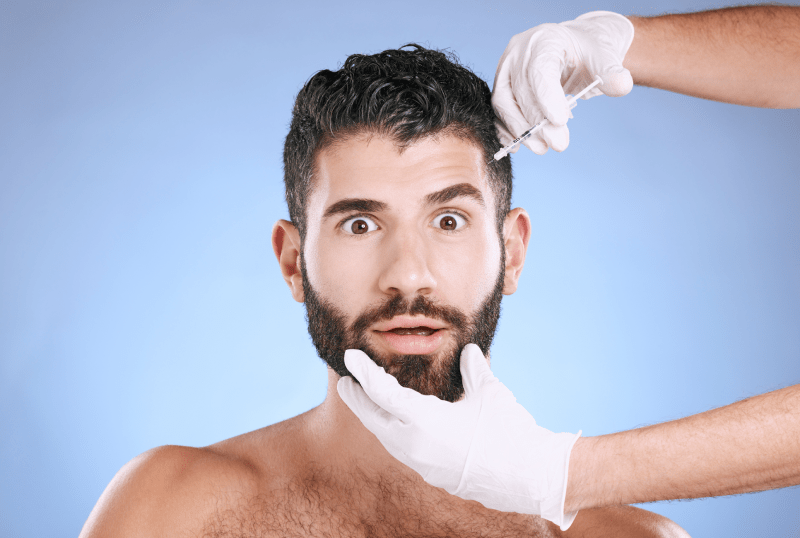
The Surprisingly Low Cost of Treatment in Turkey
Turkey’s economic structure and low general cost of living allow high-quality health services to be offered at surprisingly affordable prices. A high-quality hair transplantation operation can be priced far below the costs in Western Europe or America. This does not mean that quality or hygiene is compromised, but rather that the service is made more accessible.
Why the Turkish Lira Exchange Rate Makes Treatment Advantageous?
For international patients traveling with strong currencies like the Euro, Dollar, or Sterling, the value of the Turkish Lira makes the treatment incredibly cost-effective. Thanks to the exchange rate advantage, patients can receive a luxurious all-inclusive package (accommodation, transfer, operation) in Turkey for the price they would only pay for the operation fee in their own country. This economic advantage is the biggest factor making Turkey attractive.
Content of Cure Holiday’s All-Inclusive Packages
The all-inclusive packages offered by Cure Holiday ensure that the patient focuses only on the treatment. Packages usually include the operation itself (up to the maximum number of grafts), a specialist surgeon and team, accommodation in a 4-5 star hotel, all VIP transfers between the airport and the clinic, necessary medications, special shampoos, and full-time interpreting services. This holistic approach eliminates unexpected additional costs.
Luxury Accommodation and VIP Transfer Services
Cure Holiday aims to make the patient’s treatment process as comfortable as possible. Patients stay in selected hotels in the best areas of cities like Istanbul or Izmir. All transportation from the airport is carried out with private vehicles and in VIP standards. This allows patients to travel between the clinic and the hotel without feeling tired or stressed.
Post-Treatment Follow-up and Lifetime Support
The success of hair transplantation is not complete with the operation alone; post-treatment follow-up is vital. Cure Holiday provides lifetime support to its patients through regular online checks and photo follow-ups even after discharge. Patients can ask the specialist any questions they may have and receive guidance at every stage of the recovery process.
Use of Latest Technology and Hygiene in Turkey
Leading hair transplant clinics in Turkey have international accreditations and invest in the latest technology (Sapphire FUE, Micromotors, DHI). Hygiene standards are completely the same as, or higher than, those in Western Europe. Sterile environments, disposable materials, and strict hygiene protocols keep patient safety at the highest level.
Quality Comparison: Turkey vs. Western Clinics
In quality comparison, the intensity of experience of specialists in Turkey is superior to many boutique clinics in the West. In Turkey, patients have the opportunity to work with surgeons whose artistic ability has developed and who have performed thousands of applications thanks to the high volume of operations. The service received at a high price in Nice is offered in Turkey at a much more competitive price, with the same or even a more advanced level of surgical mastery. Therefore, receiving Turkey’s quality at a lower price is the wisest investment decision.
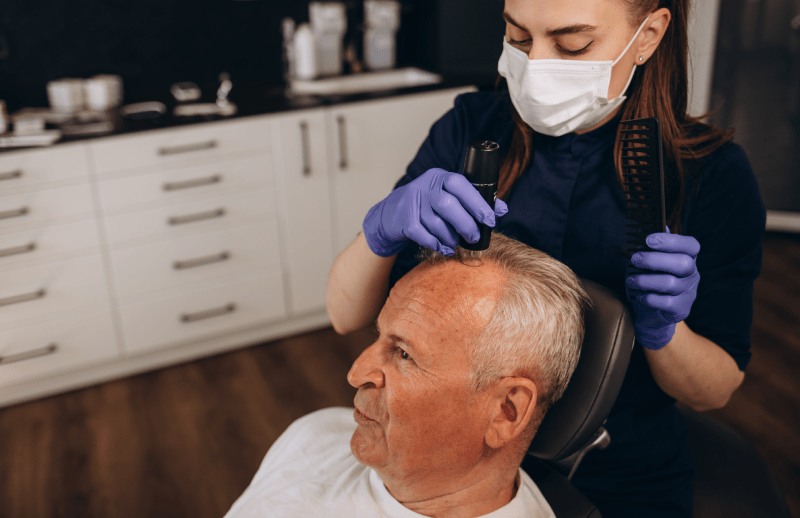
The Opportunity for Both Holiday and Treatment with Cure Holiday
One of the biggest advantages of receiving treatment in Turkey is the opportunity to turn the recovery process into an enjoyable mini-holiday. Exploring the historical riches of Istanbul, or the beauty of the Aegean or Mediterranean, reduces treatment stress and improves the overall experience. Cure Holiday also provides support for patients to participate in tours and cultural activities during their post-operation rest period.
Language Support During Treatment in Turkey (Interpreting)
Cure Holiday provides full-time and professional interpreting services to ensure that patients do not experience a language barrier. Interpreters are available at all stages of medical procedures, doctor-patient communication, transfers, and during accommodation. This support is an invaluable service in helping patients feel safe and understood.
Real Patient Reviews about Cure Holiday
International patient reviews and success stories are the biggest evidence of Cure Holiday’s reliability. Patients express their satisfaction not only with the operation results but also with the organizational excellence, warm welcome, and post-treatment attention provided. These real feedbacks are an important source of assurance for those who hesitate to come to Turkey.
Things to Do and Places to Visit After Treatment in Turkey
After the treatment, patients should spend the first few days of the recovery process resting. However, after a few days, they can visit the historical Peninsula in Istanbul, the Grand Bazaar, or take a beautiful Bosphorus tour. Turning the treatment process into a cultural experience contributes psychologically to recovery and allows them to personally experience Turkish hospitality.
Final Decision: Why Should You Choose Turkey with Cure Holiday?
If you want to get the best results in hair transplantation with the most affordable cost and in the most comfortable way, your choice should clearly be Turkey with Cure Holiday. Instead of the same or lower quality service hidden behind the high prices in Nice, choosing Turkey’s wealth of experience, latest technology, and all-inclusive comfort is the right decision for both your wallet and your hair. Cure Holiday offers you not just an operation, but a guaranteed transformation experience.


